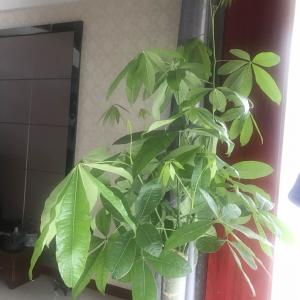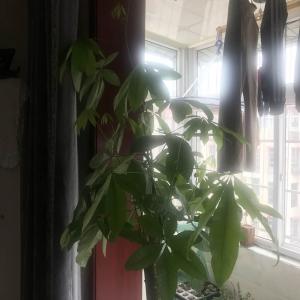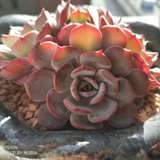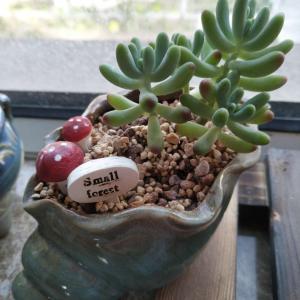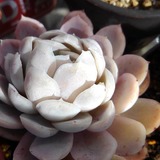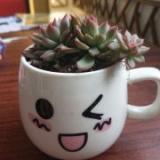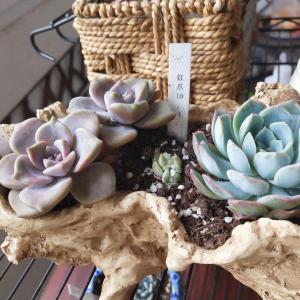文章
Miss Chen
2018年05月17日

Description: This perennial plant is about 1½–2½' tall, branching occasionally. The stems are light green and densely covered with white hairs. The alternate leaves are up to 5½" long and 2" across; they are lanceolate to ovate, smooth along the margins, and sessile. The upper surface of each leaf is dark green, sparsely covered with short hairs, and pinnately veined; the lower surface is light green and densely covered with short white hairs. The lateral veins are conspicuous on both sides of the leaves. The flowers bloom near the apex of the stems. They occur individually from the axils of the leaves; their pedicels are short. Each flower is about ¼" across, consisting of a hairy green calyx with 5 linear-lanceolate teeth and a pale yellow corolla with 5 spreading lobes and a narrow throat. The tube of the corolla is no longer than the teeth of the calyx. The reproductive organs are hidden within the corolla. The blooming period occurs from mid-spring to early summer. Only a few flowers are in bloom at the same time. They are replaced by ovoid-globoid nutlets with an outer coat that is white, smooth, and hard. The root system consists of a taproot, which may send up more than one stem.
Cultivation: The preference is dappled sunlight during the spring and light to medium shade during the remainder of the year. The soil should be moist to slightly dry, fertile and loamy, containing abundant organic matter. The hard white seeds are difficult to germinate.
Range & Habitat: The native American Gromwell is scattered across Illinois; it is an uncommon plant (see Distribution Map). Populations of this species within the state have probably declined. Habitats include rich deciduous woodlands, wooded slopes, and shaded riverbanks. This conservative species prefers high quality woodlands where the original ground flora is largely intact.
Faunal Associations: The structure of the flowers suggests that the pollinators are long-tongued bees and butterflies. More specific information about floral-faunal relationships is currently unavailable.

Photographic Location: Toward the bottom of a moist wooded slope in Vermilion County, Illinois.
Comments: American Gromwell is one of the woodland wildflowers that blooms during the spring, but it is often overlooked and many field guides fail to describe it, probably because its flowers are not very showy. American Gromwell resembles Lithospermum officinale (European Gromwell) in its overall appearance. This latter species produces flowers in flat-headed cymes and its leaves are more slender. In contrast, American Gromwell produces individual flowers from the axils of the leaves. Another European species, Buglossoides arvense (Corn Gromwell), produces individual flowers from the axils of the leaves, but these flowers are bright white and its leaves are smaller in size. Corn Gromwell produces nutlets that are brown and wrinkled, rather than smooth and white. Other Lithospermum spp. in Illinois are native prairie plants that also produce flowers in flat-headed cymes. The flowers of these latter species have longer corollas that are a brilliant yellow or orange-yellow.
Cultivation: The preference is dappled sunlight during the spring and light to medium shade during the remainder of the year. The soil should be moist to slightly dry, fertile and loamy, containing abundant organic matter. The hard white seeds are difficult to germinate.
Range & Habitat: The native American Gromwell is scattered across Illinois; it is an uncommon plant (see Distribution Map). Populations of this species within the state have probably declined. Habitats include rich deciduous woodlands, wooded slopes, and shaded riverbanks. This conservative species prefers high quality woodlands where the original ground flora is largely intact.
Faunal Associations: The structure of the flowers suggests that the pollinators are long-tongued bees and butterflies. More specific information about floral-faunal relationships is currently unavailable.

Photographic Location: Toward the bottom of a moist wooded slope in Vermilion County, Illinois.
Comments: American Gromwell is one of the woodland wildflowers that blooms during the spring, but it is often overlooked and many field guides fail to describe it, probably because its flowers are not very showy. American Gromwell resembles Lithospermum officinale (European Gromwell) in its overall appearance. This latter species produces flowers in flat-headed cymes and its leaves are more slender. In contrast, American Gromwell produces individual flowers from the axils of the leaves. Another European species, Buglossoides arvense (Corn Gromwell), produces individual flowers from the axils of the leaves, but these flowers are bright white and its leaves are smaller in size. Corn Gromwell produces nutlets that are brown and wrinkled, rather than smooth and white. Other Lithospermum spp. in Illinois are native prairie plants that also produce flowers in flat-headed cymes. The flowers of these latter species have longer corollas that are a brilliant yellow or orange-yellow.
0
0
文章
Miss Chen
2018年05月17日

Description: This herbaceous perennial plant is 1-3' tall, branching sparingly. It is relatively short-lived. The foliage consists of basal leaves and bolting stems with alternate leaves; most vegetative growth occurs during the spring. The stems are light to medium green, glabrous, and terete; sometimes they are slightly angular or slightly furrowed. The leaves are up to 5" long and 2" across, becoming smaller as they ascend the stems. They are usually more or less ovate, serrated or dentate along their margins, medium green, and glabrous. The basal leaves and lower alternate leaves are often pinnately lobed (pinnatifid); these lobes occur in 1-4 pairs near the base of each leaf. The upper stems terminate in erect racemes of flowers about 6-18" in length. Sometimes shorter racemes of flowers also develop from the axils of the upper leaves.
Each flower is about ¼" (6 mm.) across, consisting of 4 petals that are pale violet to nearly white, 4 pale gray or pale violet sepals, 6 stamens with violet anthers, and a pistil with a stout style. The petals are oblanceolate in shape and longer than the sepals. The sepals are oblong in shape and usually glabrous, although the tips of sepals on young flowers are sometimes finely hairy. The pedicels of the flowers are about 6-8 mm. long, ascending, and glabrous; they are green, greenish violet, or violet. The rachises (central stalks) and peduncles (basal stalks) of the racemes are green or purplish green and glabrous. The blooming period occurs during the early summer and lasts about 3 weeks. The flowers are often fragrant, particularly in sunny locations. The flowers are replaced by glabrous siliques (narrowly cylindrical seedpods) that become about ½–1" long at maturity. Each silique contains a single row of oblongoid seeds. Immature siliques are green to dark violet. The root system consists of a taproot. This plant spreads by reseeding itself.

Cultivation: The preference is partial sun to medium shade, wet to moist conditions, and rich loamy soil with abundant organic matter. This plant is able to tolerate temporary flooding.
Range & Habitat: The native Purple Rocket occurs occasionally in east central and NE Illinois, while in other areas of the state it is uncommon or absent (see Distribution Map). Habitats include wet to mesic deciduous woodlands, particularly in floodplain areas along rivers and low-lying areas that are prone to occasional flooding. This plant also occurs in soggy meadows near wooded areas, including sunny areas that are adjacent to small streams and drainage ditches. Purple Rocket is a non-weedy member of the Mustard family that usually occurs in higher quality natural areas, less often at degraded sites.

Faunal Associations: There is very little information about floral-faunal relationships for this species. In sunny areas, the nectar of the flowers attracts bees and butterflies; in particular, the butterfly Pieris rapae (Cabbage White) is strongly attracted to the flowers. In shady areas, the flowers appear to attract about the same number of bees, but fewer butterflies.
Photographic Location: Along a drainage ditch in a moist meadow at Judge Webber Park in Urbana, Illinois. This meadow is rather weedy and located near a wooded area. Purple Rocket also occurs in damp shady areas at Busey Woods in the same city.

Comments: This is one of the more unusual members of the Mustard family because it is native, non-weedy, and has pale violet flowers. As these flowers become older, their color fades to white. In sunny areas, the elongated racemes of flowers can become exceptionally long – often comprising the upper half of the plant, if not more. However, they tend to be a little shorter and less showy in shady areas. Purple Rocket (Iodanthus pinnatifidus) is fairly easy to identify in the field because it doesn't closely resemble any other member of the Mustard family. Perhaps the most similar species is Blue Mustard (Chorispora tenella). This introduced species is rare in Illinois; it differs from Purple Rocket in having pink or purplish pink flowers and glandular hairs on its stems and pedicels. The siliques of Blue Mustard curve upward and they have longer beaks. Another member of the Mustard family, the introduced Dame's Rocket (Hesperis matronalis), has much larger flowers that are rosy pink. The petals of its flowers are well-rounded and overlapping, while the petals of Purple Rocket are more narrow and don't overlap.
Each flower is about ¼" (6 mm.) across, consisting of 4 petals that are pale violet to nearly white, 4 pale gray or pale violet sepals, 6 stamens with violet anthers, and a pistil with a stout style. The petals are oblanceolate in shape and longer than the sepals. The sepals are oblong in shape and usually glabrous, although the tips of sepals on young flowers are sometimes finely hairy. The pedicels of the flowers are about 6-8 mm. long, ascending, and glabrous; they are green, greenish violet, or violet. The rachises (central stalks) and peduncles (basal stalks) of the racemes are green or purplish green and glabrous. The blooming period occurs during the early summer and lasts about 3 weeks. The flowers are often fragrant, particularly in sunny locations. The flowers are replaced by glabrous siliques (narrowly cylindrical seedpods) that become about ½–1" long at maturity. Each silique contains a single row of oblongoid seeds. Immature siliques are green to dark violet. The root system consists of a taproot. This plant spreads by reseeding itself.

Cultivation: The preference is partial sun to medium shade, wet to moist conditions, and rich loamy soil with abundant organic matter. This plant is able to tolerate temporary flooding.
Range & Habitat: The native Purple Rocket occurs occasionally in east central and NE Illinois, while in other areas of the state it is uncommon or absent (see Distribution Map). Habitats include wet to mesic deciduous woodlands, particularly in floodplain areas along rivers and low-lying areas that are prone to occasional flooding. This plant also occurs in soggy meadows near wooded areas, including sunny areas that are adjacent to small streams and drainage ditches. Purple Rocket is a non-weedy member of the Mustard family that usually occurs in higher quality natural areas, less often at degraded sites.

Faunal Associations: There is very little information about floral-faunal relationships for this species. In sunny areas, the nectar of the flowers attracts bees and butterflies; in particular, the butterfly Pieris rapae (Cabbage White) is strongly attracted to the flowers. In shady areas, the flowers appear to attract about the same number of bees, but fewer butterflies.
Photographic Location: Along a drainage ditch in a moist meadow at Judge Webber Park in Urbana, Illinois. This meadow is rather weedy and located near a wooded area. Purple Rocket also occurs in damp shady areas at Busey Woods in the same city.

Comments: This is one of the more unusual members of the Mustard family because it is native, non-weedy, and has pale violet flowers. As these flowers become older, their color fades to white. In sunny areas, the elongated racemes of flowers can become exceptionally long – often comprising the upper half of the plant, if not more. However, they tend to be a little shorter and less showy in shady areas. Purple Rocket (Iodanthus pinnatifidus) is fairly easy to identify in the field because it doesn't closely resemble any other member of the Mustard family. Perhaps the most similar species is Blue Mustard (Chorispora tenella). This introduced species is rare in Illinois; it differs from Purple Rocket in having pink or purplish pink flowers and glandular hairs on its stems and pedicels. The siliques of Blue Mustard curve upward and they have longer beaks. Another member of the Mustard family, the introduced Dame's Rocket (Hesperis matronalis), has much larger flowers that are rosy pink. The petals of its flowers are well-rounded and overlapping, while the petals of Purple Rocket are more narrow and don't overlap.
0
0
文章
Miss Chen
2018年05月17日

Description: This herbaceous perennial plant is 1-2' tall, branching sparingly. The stems are green, reddish green, or reddish brown, and they are glabrous to slightly hairy. When they are present, these hairs are curved or appressed against their stems. The alternate leaves are up to 6" long and 4" across (excluding the petioles); they are pinnately divided into 3-5 leaflets or deep lobes, and their margins are coarsely toothed or shallowly cleft. The lobes of these leaves are relatively narrow and they have acute tips. The earliest leaves in spring have small patches of white that are scattered across their upper surfaces; these white patches don't develop in later leaves. The petioles are up to 2" long, light green to reddish brown, and glabrous to short-pubescent; they are flat or furrowed along their upper sides and convex below. Each upper stem terminates in 1 or 2 cymes of flowers. The flowering stalks (or peduncles) of these cymes are up to 4" long; they are terete and glabrous to short-pubescent.
The stalks terminate in dense cymes of flowers about 1-2" across; each cyme contains about 8-20 flowers. Each flower is about 8-12 mm. long, consisting of a corolla with 5 lobes, a hairy green calyx with 5 linear teeth, 5 stamens, and a slender white style that is divided at its tip. The corolla is white, pink, or light lavender; its oblong lobes spread apart only slightly when the flower is fully open. The stamens are strongly exerted from the corolla and quite conspicuous; they have hairy white filaments and brownish anthers. The pedicels of the flowers are up to 12 mm. (½") in length; they are terete and glabrous to short-pubescent. The blooming period occurs during late spring to early summer, lasting about 3-4 weeks; some plants may bloom a little earlier or later than this. Each flower is replaced by a seed capsule that splits open to release its seeds. The root system consists of a tuft of fibrous roots and rhizomes. Occasionally, this plant forms colonies.

Cultivation: The preference is partial sun to light shade, moist to dry-mesic conditions, and a rich loamy soil with decaying leaves. This plant can be cultivated in gardens where there is some shade from deciduous trees.
Range & Habitat: The native Virginia Waterleaf is occasional to locally common in central and northern Illinois, while in southern Illinois it is uncommon or absent (see Distribution Map). Habitats include deciduous woodlands, savannas, areas along woodland paths, wooded slopes along rivers, bluffs, edges of clearings in wooded areas, and powerline clearances in wooded areas. This wildflower benefits from occasional disturbance if it removes excessive woody vegetation, and populations of this species decline in response to invasion from Garlic Mustard (Alliaria petiolata).

Faunal Associations: The nectar and pollen of the flowers attract bumblebees, long-horned bees (Synhalonia spp.), cuckoo bees (Nomada spp.), mason bees (Osmia spp.), Halictid bees (Lasioglossum spp., Augochlorella spp., etc.), Andrenid bees (Andrena spp.), and bee flies (Bombyliidae). An Andrenid bee, Andrena geranii, is a specialist pollinator of Hydrophyllum spp. Syrphid flies sometimes feed on the pollen of the flowers, but they are less effective at cross-pollination. The foliage is browsed by White-tailed Deer occasionally.
Photographic Location: Busey Woods in Urbana, Illinois.

Comments: This is probably the most common Hydrophyllum sp. in Illinois. Virginia Waterleaf has attractive flowers and foliage; it blooms a little later than most spring-blooming wildflowers in woodlands. The following characteristics distinguish this species from other Hydrophyllum spp. that occur in the state: 1) There are no curved appendages between the teeth of the calyx, 2) the stems are hairless, or they have lines of hairs that are curved or appressed against the stem, 3) the leaves are pinnately lobed and they are usually a little longer than wide, 4) the lobes of the corolla spread apart only a little, 5) the stamens and styles are longer than their corollas, and 6) the lobes of the leaves have acute tips. Other Hydrophyllum spp. have little appendages between the teeth of their calyxes, or they have stems with abundant spreading hairs, or they have palmately lobed leaves that are as wide as they are long, or the lobes of their corollas spread widely apart, or their stamens and styles are no longer than their corollas, or the lobes of their leaves have blunt tips. While this set of distinctions may sound complicated, it is usually easy to identify Virginia Waterleaf in the field.
The stalks terminate in dense cymes of flowers about 1-2" across; each cyme contains about 8-20 flowers. Each flower is about 8-12 mm. long, consisting of a corolla with 5 lobes, a hairy green calyx with 5 linear teeth, 5 stamens, and a slender white style that is divided at its tip. The corolla is white, pink, or light lavender; its oblong lobes spread apart only slightly when the flower is fully open. The stamens are strongly exerted from the corolla and quite conspicuous; they have hairy white filaments and brownish anthers. The pedicels of the flowers are up to 12 mm. (½") in length; they are terete and glabrous to short-pubescent. The blooming period occurs during late spring to early summer, lasting about 3-4 weeks; some plants may bloom a little earlier or later than this. Each flower is replaced by a seed capsule that splits open to release its seeds. The root system consists of a tuft of fibrous roots and rhizomes. Occasionally, this plant forms colonies.

Cultivation: The preference is partial sun to light shade, moist to dry-mesic conditions, and a rich loamy soil with decaying leaves. This plant can be cultivated in gardens where there is some shade from deciduous trees.
Range & Habitat: The native Virginia Waterleaf is occasional to locally common in central and northern Illinois, while in southern Illinois it is uncommon or absent (see Distribution Map). Habitats include deciduous woodlands, savannas, areas along woodland paths, wooded slopes along rivers, bluffs, edges of clearings in wooded areas, and powerline clearances in wooded areas. This wildflower benefits from occasional disturbance if it removes excessive woody vegetation, and populations of this species decline in response to invasion from Garlic Mustard (Alliaria petiolata).

Faunal Associations: The nectar and pollen of the flowers attract bumblebees, long-horned bees (Synhalonia spp.), cuckoo bees (Nomada spp.), mason bees (Osmia spp.), Halictid bees (Lasioglossum spp., Augochlorella spp., etc.), Andrenid bees (Andrena spp.), and bee flies (Bombyliidae). An Andrenid bee, Andrena geranii, is a specialist pollinator of Hydrophyllum spp. Syrphid flies sometimes feed on the pollen of the flowers, but they are less effective at cross-pollination. The foliage is browsed by White-tailed Deer occasionally.
Photographic Location: Busey Woods in Urbana, Illinois.

Comments: This is probably the most common Hydrophyllum sp. in Illinois. Virginia Waterleaf has attractive flowers and foliage; it blooms a little later than most spring-blooming wildflowers in woodlands. The following characteristics distinguish this species from other Hydrophyllum spp. that occur in the state: 1) There are no curved appendages between the teeth of the calyx, 2) the stems are hairless, or they have lines of hairs that are curved or appressed against the stem, 3) the leaves are pinnately lobed and they are usually a little longer than wide, 4) the lobes of the corolla spread apart only a little, 5) the stamens and styles are longer than their corollas, and 6) the lobes of the leaves have acute tips. Other Hydrophyllum spp. have little appendages between the teeth of their calyxes, or they have stems with abundant spreading hairs, or they have palmately lobed leaves that are as wide as they are long, or the lobes of their corollas spread widely apart, or their stamens and styles are no longer than their corollas, or the lobes of their leaves have blunt tips. While this set of distinctions may sound complicated, it is usually easy to identify Virginia Waterleaf in the field.
0
0
文章
权问薇
2018年05月17日

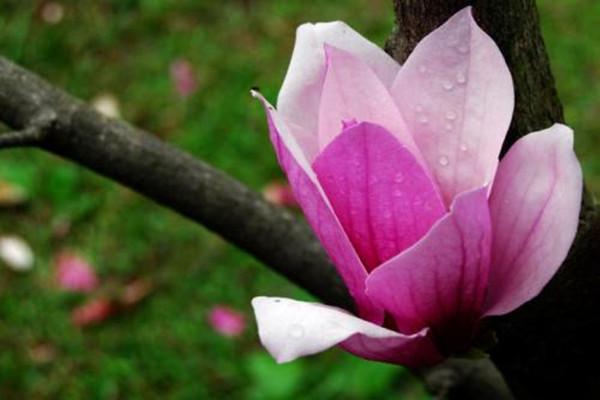
1.采收种子和处理种子
它的种子一般都是在8到10月份的时候开始成熟,如果我们要去采收的话,尽量选择一些树龄较高,并且健壮无病害的植株,因为这种植株的结种量非常多,而且质量也很好。
将果实采收下来后,我们要将它们及时的摊在阴凉的地放晾晒,几天之后,这些果实就会自然裂开,这时我们可以拿来一个棍子开始敲打,直至种子从里面出来,然后就可以用一些河沙跟它们混合,再进行贮藏。贮藏的时候,尽量选择一些阴凉通风的地方,而且沙土还不能太厚了,期间还要适当的翻动几次,并且还要及时额外加水维持潮湿。之后就可以等着去种了。
2.土壤的准备
准备土壤时,我们要选择一些土质较疏松、肥厚和透气的沙质壤土,之后再把它仔细的整理一遍,并且还要加入一些基肥,以便于前期营养的充分。基肥加好了之后,我们还要给土壤消一下毒,这样就可以让种子不容易受到病虫的伤害。
3.开始播种
我们一般都会选在深冬或者是初春的时候进行播种。首先我们将沙藏的种子取出来,然后纷纷的撒在准备好的土壤上,之后就可以在上面盖上一层土,然后开始浇水,让土壤含有一定的水分,水浇好之后,还要再在上面盖上一层稻草,这样可以起到保持温度的作用。基本上等个40天后,种子就会开始发芽出土了。

4.后期管理
种子出土了之后,我们就要及时的把上面的稻草给揭掉,改成拱形的地膜盖在上面,差不多等到50天之后,这些小苗就会开始长出来真叶了。3月下旬,小苗基本上都出齐了,这时候我们要根据天气情况给它进行适当遮阴。这样才能让小苗尽快移栽出去。
0
0
文章
权问薇
2018年05月17日


健胃消食片
健胃消食片是咱们平时促进肠胃消化的药,呈酸性,可以制成酸性肥,为了花能更好的吸收,一般泡成肥水来用

1、泡水溶解
2-3粒消食片兑500毫升清水,摇一摇使药片快速溶解
2、发酵
放在有阳光的地方发酵,现在的气温,大概2-3天就发酵好了(闻到酸酸的酒气),偶尔开下盖子敞气
3、使用
发酵好的肥水要兑清水,肥水:清水=1:10,浇土里或者擦拭叶子都行
4、花开更多
消食片肥水里面有丰富的营养菌、微量元素,是非常好的酸性复合肥,可以促花、催花
维生素C
维生素C几乎家家都有,都说是美容养颜,但总是忘了吃,有些都过期了,赶紧拿来养花吧

1、兑水浇花
维生素C很好溶解,特别是VC泡腾片,一片可以快速冲一杯
2、浇花
1粒维生素C冲1000毫升的水就可以直接浇花了,适用于月季、栀子、茶花、米兰等喜酸的花
3、减少黄叶,延长花期
VC可以抗氧化,帮助植物抵抗空气中的氯气,1个月浇上2次左右,可以延长花期,保护植物减少氧化~
维生素B12
花动不动就黄叶枯萎,多半是根出了问题,根肥才能叶壮,所以先把根养好,喂它吃点维生素B12吧

1、碾碎拌花土
将2-3粒维生素B12碾碎,均匀拌在盆土里,已经栽好的可以在5厘米深的地方埋一圈
2、浇水
1-2粒维生素B12兑1000毫升水,可以直接来浇花
3、养根、防虫
VB12可以提高根系的抵抗力,根壮了开花自然多。不仅如此,虫子非常讨厌它的气味,所以用它来浇花虫子都绕道走啦
阿司匹林
阿司匹林也是大部分家中的常备药,头疼什么的都需要它,大家可能还不知道,它也能养花~

1、兑水浇花
1-2粒阿司匹林先碾碎,然后兑上1升的清水,摇匀就可以浇花了
2、使花加速生长、提高抵抗力
阿司匹林里的水杨酸能够加快植物的生长速度,同时提高免疫力,不仅能当肥还能保健
紫药水
紫药水是家家必备,一有个磕磕碰碰就找它,你知道它还能用来养花吗?

1、治疗叶斑病
月季、栀子、发财树、绣球、君子兰等等很容易得叶斑病,难根治还传染,其实可以涂上紫药水来杀菌防传染
2、泡根杀菌
如果花烂根了,清理掉烂根后要及时消炎杀菌,也可以放在紫药水里泡上5-10分钟
达克宁
夏天来了,达克宁是不是又要开始轰炸了哈哈,感觉家里总是剩下半管子,放着都过期了,还不如拿来养花

1、治疗叶斑病
达克宁可以抑制真菌,防止传染,非常适合用在治疗花花草草的叶斑病、黄褐病
2、治疗烂根、防止深度腐烂
春夏季节,浇水稍有不慎花就烂根,如果是老桩花一换盆就死,这时候不用换盆也能救,先控水几天
控水后拔掉恢复不了的软叶、烂叶,根部稍微变的干燥就是好事
在根部涂抹达克宁,不要太多留点空隙给植物呼吸就行
一般轻微的根腐都可以用,不用眼睁睁看着花烂死啦
2
3
文章
Miss Chen
2018年05月16日

Description: This herbaceous perennial plant is about 1½–3' tall, branching occasionally. The stems are green, terete to angular, and either glabrous or sparsely hairy along two opposite lines. The opposite leaves are up to 5" long and 3" across; they are lanceolate to ovate in shape and smooth or slightly undulate along their margins. The upper leaf surface is yellowish green to dark green and glabrous (or nearly so), while the lower leaf surface is pale to medium green and glabrous to sparsely hairy along the undersides of the veins. The petioles are ¼–½" long. From the axils of the middle to upper leaves, there develops 1-3 flowers that are nearly sessile. Less often, such flowers will terminate a lateral stem that is up to 6" long, directly above a pair of leaves.
Each flower is about 2" long and 1½" across, consisting of a funnelform corolla that is pinkish lavender to bluish violet (rarely white, except at its base), a green short-tubular calyx with long slender teeth, 4 inserted stamens, and a pistil with an inserted style. The corolla is narrowly tubular at the base, but it spreads outward to form 5 rounded lobes. The lobes of the corolla have undulate edges and a delicate appearance. At the throat of the corolla, there are several fine veins that are purple and somewhat reticulated; they function as nectar guides for visiting insects. The tubular portion of the calyx is about ¼" long or a little less, while its teeth are ½–1" long, linear-lanceolate in shape, strongly ciliate along their margins, and 2-3 mm. across.

The blooming period occurs during the summer for 2-3 months. Each diurnal flower lasts only a single day; a single mature plant will have about 0-2 flowers in bloom during a typical summer day. The flowers are often partially hidden by the foliage. Afterwards, the flowers are replaced by glabrous seed capsules that are up to ¾" long. Each of these capsules contains several seeds that are released explosively. Individual seeds are about 3 mm. (1/8") across, flattened-globoid in shape, and brown to dark brown. There is a less common form of this plant that produces non-showy cleistogamous flowers (f. cleistantha); it usually has more narrow leaves than the typical form (f. strepens).

Cultivation: The preference is light shade or partial sun, moist to mesic conditions, and either loamy or rocky soil containing some organic matter. This plant is not often bothered by either disease and insect pests. It may fail to flower in areas with medium to dense shade.
Range & Habitat: The native Smooth Wild Petunia occurs occasionally in southern and central Illinois, while it is absent in the northern section of the state (see Distribution Map). Habitats include moist to mesic open woodlands, woodland edges, areas along woodland paths, thickets, thinly wooded slopes along rivers, and rocky banks of streams. In woodlands where there is an absence of fire or other disturbance, populations of this plant may decline because of excessive shade, particularly when those woodlands have become dominated by Sugar Maple (Acer saccharum) and other woody vegetation that cast heavy shade.

Faunal Associations: The flowers have few visitors, although their nectar and pollen occasionally attract the smaller long-tongued bees (personal observation). Robertson (1929) observed the long-horned bee, Synhalonia speciosa, visiting the flowers of Smooth Wild Petunia. According to MacRae (1991), the adults of some metallic wood-boring beetles (Acmaeodera spp.) also visit the flowers. Sometimes pieces of the corolla are used by leaf-cutting bees (Megachile spp.) in the construction of their brood nests; these bees may also visit the flowers for nectar and pollen. The caterpillars of a butterfly, Junonia coenia (Buckeye), have been observed feeding on the foliage of Ruellia spp. (Wild Petunias). Otherwise, little is known about floral-faunal relationships for plants in this genus.
Photographic Location: Along a path in a mesic area of Busey Woods, Urbana, Illinois, and along the rocky bank of a stream in southern Illinois.

Comments: The flowers of Ruellia spp. (Wild Petunias) have a striking resemblance to the flowers of the cultivated Petunia (Petunia × hybrida), which has been introduced from South America and belongs to a different family of plants (Solanaceae). However, the flowers of Wild Petunias have less diversity of color. Mohlenbrock (2003) describes 4 Ruellia spp. in Illinois; some of these are restricted to the southern one-third of the state. Smooth Wild Petunia (Ruellia strepens) is very similar in appearance to Carolina Wild Petunia (Ruellia caroliniensis) and Stalked Wild Petunia (Ruellia pedunculata). Its calyx teeth are wider (2.0–3.0 mm. across), whereas the latter two species have linear calyx teeth that are only 1.0–1.5 mm. across. Stalked Wild Petunia also differs by producing terminal flowers on long lateral stems only, rather than non-terminal flowers from the axils of leaves, and its stems are more hairy. Some authors regard Smooth Wild Petunia and Carolina Wild Petunia as variants of the same species. The remaining species of this genus in Illinois, Hairy Wild Petunia Smooth (Ruellia humilis), is a shorter plant with much hairier stems and leaves than Smooth Wild Petunia. Hairy Wild Petunia also prefers habitats that are more sunny and dry, such as prairies.
Each flower is about 2" long and 1½" across, consisting of a funnelform corolla that is pinkish lavender to bluish violet (rarely white, except at its base), a green short-tubular calyx with long slender teeth, 4 inserted stamens, and a pistil with an inserted style. The corolla is narrowly tubular at the base, but it spreads outward to form 5 rounded lobes. The lobes of the corolla have undulate edges and a delicate appearance. At the throat of the corolla, there are several fine veins that are purple and somewhat reticulated; they function as nectar guides for visiting insects. The tubular portion of the calyx is about ¼" long or a little less, while its teeth are ½–1" long, linear-lanceolate in shape, strongly ciliate along their margins, and 2-3 mm. across.

The blooming period occurs during the summer for 2-3 months. Each diurnal flower lasts only a single day; a single mature plant will have about 0-2 flowers in bloom during a typical summer day. The flowers are often partially hidden by the foliage. Afterwards, the flowers are replaced by glabrous seed capsules that are up to ¾" long. Each of these capsules contains several seeds that are released explosively. Individual seeds are about 3 mm. (1/8") across, flattened-globoid in shape, and brown to dark brown. There is a less common form of this plant that produces non-showy cleistogamous flowers (f. cleistantha); it usually has more narrow leaves than the typical form (f. strepens).

Cultivation: The preference is light shade or partial sun, moist to mesic conditions, and either loamy or rocky soil containing some organic matter. This plant is not often bothered by either disease and insect pests. It may fail to flower in areas with medium to dense shade.
Range & Habitat: The native Smooth Wild Petunia occurs occasionally in southern and central Illinois, while it is absent in the northern section of the state (see Distribution Map). Habitats include moist to mesic open woodlands, woodland edges, areas along woodland paths, thickets, thinly wooded slopes along rivers, and rocky banks of streams. In woodlands where there is an absence of fire or other disturbance, populations of this plant may decline because of excessive shade, particularly when those woodlands have become dominated by Sugar Maple (Acer saccharum) and other woody vegetation that cast heavy shade.

Faunal Associations: The flowers have few visitors, although their nectar and pollen occasionally attract the smaller long-tongued bees (personal observation). Robertson (1929) observed the long-horned bee, Synhalonia speciosa, visiting the flowers of Smooth Wild Petunia. According to MacRae (1991), the adults of some metallic wood-boring beetles (Acmaeodera spp.) also visit the flowers. Sometimes pieces of the corolla are used by leaf-cutting bees (Megachile spp.) in the construction of their brood nests; these bees may also visit the flowers for nectar and pollen. The caterpillars of a butterfly, Junonia coenia (Buckeye), have been observed feeding on the foliage of Ruellia spp. (Wild Petunias). Otherwise, little is known about floral-faunal relationships for plants in this genus.
Photographic Location: Along a path in a mesic area of Busey Woods, Urbana, Illinois, and along the rocky bank of a stream in southern Illinois.

Comments: The flowers of Ruellia spp. (Wild Petunias) have a striking resemblance to the flowers of the cultivated Petunia (Petunia × hybrida), which has been introduced from South America and belongs to a different family of plants (Solanaceae). However, the flowers of Wild Petunias have less diversity of color. Mohlenbrock (2003) describes 4 Ruellia spp. in Illinois; some of these are restricted to the southern one-third of the state. Smooth Wild Petunia (Ruellia strepens) is very similar in appearance to Carolina Wild Petunia (Ruellia caroliniensis) and Stalked Wild Petunia (Ruellia pedunculata). Its calyx teeth are wider (2.0–3.0 mm. across), whereas the latter two species have linear calyx teeth that are only 1.0–1.5 mm. across. Stalked Wild Petunia also differs by producing terminal flowers on long lateral stems only, rather than non-terminal flowers from the axils of leaves, and its stems are more hairy. Some authors regard Smooth Wild Petunia and Carolina Wild Petunia as variants of the same species. The remaining species of this genus in Illinois, Hairy Wild Petunia Smooth (Ruellia humilis), is a shorter plant with much hairier stems and leaves than Smooth Wild Petunia. Hairy Wild Petunia also prefers habitats that are more sunny and dry, such as prairies.
1
1
文章
Miss Chen
2018年05月16日

Description: This herbaceous perennial plant is about 6" tall, although its stems can extend up to 1' long. Both basal leaves and stems with alternate leaves are produced; the latter usually sprawl across the ground. The stems are light green, reddish green, or brownish green, and glabrous to sparsely pubescent. The basal and alternate leaves are up to 3" long and across (excluding the petioles); they are yellowish green to dark green, trifoliate, and glabrous. The leaflets are obovate, broadly obovate, or rhombic in outline and their margins are shallowly to deeply cleft and coarsely dentate. The terminal leaflet has a longer petiolule (basal stalklet at its base) than either of the lateral leaflets. There is some variability in how broad and deeply cleft the leaflets are across different populations of plants. The petioles are up to 3" long, light green to reddish green, and glabrous to sparsely pubescent; they are grooved above and convex below.
Occasionally, individual flowers develop from unbranched stalks about 2-5" long. These stalks are ascending to erect, green, and glabrous to pubescent. Each flower spans about ¾" across, consisting of 5 yellow petals, 5 light green sepals, numerous yellow stamens, and a cluster of pistils in the center of the flower. The petal bases are often pale yellow with fine veins functioning as nectar guides; the remainder of the petals are bright yellow and shiny. The petals are obovate with rounded tips; they are longer than the sepals. The blooming period occurs from mid-spring to early summer and lasts about 1½ months. After the petals fall away, the pistils are replaced by a cluster of flattened achenes with long beaks; these achenes are 2.5-3.5 mm. in length. The root system consists of a tuft of fibrous roots. The sprawling stems are able to form rootlets when their nodes establish contact with moist ground. Swamp Buttercup sometimes forms loose colonies of plants at favorable sites.

Cultivation: The preference is partial sun to light shade, wet to mesic conditions, and a fertile loamy soil with some decaying leaf mould. Standing water from spring rainfall is tolerated if it is temporary.
Range & Habitat: Swamp Buttercup is a common plant that occurs in most counties of Illinois (see Distribution Map), where it is native. Habitats include moist to mesic deciduous woodlands, soggy areas along vernal pools, swamps, partially shaded areas of seeps, and areas along springs in woodlands. This species often grows in soggy areas of woodlands that are too wet for some invasive species, such as Alliaria petiolata (Garlic Mustard). Therefore, populations of Swamp Buttercup remain reasonably secure. This plant is also able to tolerate some degradation of its habitat from other causes.

Faunal Associations: The flowers attract their fair share of flower visitors, including little carpenter bees (Ceratina spp.), mason bees (Osmia spp.), Halictid bees (Halictus spp., Lasioglossum spp.), Andrenid bees (Andrena spp.), Syrphid flies, bee flies (Bombylius spp.), Muscid flies, Anthomyiid flies, skippers, and miscellaneous beetles. The bees suck nectar or collect pollen, while the flies and beetles suck nectar or feed on pollen. Other insects feed destructively on the foliage, roots, and other parts of Swamp Buttercup and other buttercups (Ranunculus spp.). These species include the leaf beetles Prasocuris ovalis and Prasocuris vittata, larvae of the sawflies Monophadnus pallescens and Stethomostus fuliginosus, Thecabius affinis (Poplar-Buttercup Aphid) and Thecabius gravicornis (Folded-Leaf Balsam Aphid), and larvae of the moth Sparganothis sulfureana (Sparganothis Leafroller). The foliage of buttercups is more or less toxic and it is avoided by mammalian herbivores. However, the seeds of these plants are eaten to a limited extent by the Wild Turkey, Cottontail Rabbit, Fox Squirrel, Gray Squirrel, Eastern Chipmunk, and Meadow Vole. The Wild Turkey reportedly browses on the foliage of buttercups, notwithstanding its toxicity (Martin et al., 1951/1961).

Photographic Location: A moist deciduous woodland at Busey Woods in Urbana, Illinois.
Comments: With the exception of the weedy Ranunculus abortivus (Small-Flowered Buttercup), this is probably the most common buttercup (Ranunculus spp.) in Illinois. It is possible to confuse Swamp Buttercup with similar species, especially Ranunculus hispidus (Hispid Buttercup), Ranunculus carolinianus (Carolina Buttercup), and the introduced Ranunculus repens (Creeping Buttercup). Unlike Swamp Buttercup, the stems of Hispid Buttercup have abundant spreading hairs and they are usually more erect. Carolina Buttercup is supposed to have longer achenes (3.5–5.0 mm. in length) than the preceding two species, however its status as a separate species is debatable. Some authorities consider Swamp Buttercup and Carolina Buttercup to be different varieties of Ranunculus hispidus (Duncan & Duncan, 1999; Yatskievych, 2000), although Mohlenbrock (2002) doesn't. The leaves of Creeping Buttercup are less deeply cleft and they are often splotched with pale green or white patterns. In addition, its achenes are less flattened than those of Swamp Buttercup.
Occasionally, individual flowers develop from unbranched stalks about 2-5" long. These stalks are ascending to erect, green, and glabrous to pubescent. Each flower spans about ¾" across, consisting of 5 yellow petals, 5 light green sepals, numerous yellow stamens, and a cluster of pistils in the center of the flower. The petal bases are often pale yellow with fine veins functioning as nectar guides; the remainder of the petals are bright yellow and shiny. The petals are obovate with rounded tips; they are longer than the sepals. The blooming period occurs from mid-spring to early summer and lasts about 1½ months. After the petals fall away, the pistils are replaced by a cluster of flattened achenes with long beaks; these achenes are 2.5-3.5 mm. in length. The root system consists of a tuft of fibrous roots. The sprawling stems are able to form rootlets when their nodes establish contact with moist ground. Swamp Buttercup sometimes forms loose colonies of plants at favorable sites.

Cultivation: The preference is partial sun to light shade, wet to mesic conditions, and a fertile loamy soil with some decaying leaf mould. Standing water from spring rainfall is tolerated if it is temporary.
Range & Habitat: Swamp Buttercup is a common plant that occurs in most counties of Illinois (see Distribution Map), where it is native. Habitats include moist to mesic deciduous woodlands, soggy areas along vernal pools, swamps, partially shaded areas of seeps, and areas along springs in woodlands. This species often grows in soggy areas of woodlands that are too wet for some invasive species, such as Alliaria petiolata (Garlic Mustard). Therefore, populations of Swamp Buttercup remain reasonably secure. This plant is also able to tolerate some degradation of its habitat from other causes.

Faunal Associations: The flowers attract their fair share of flower visitors, including little carpenter bees (Ceratina spp.), mason bees (Osmia spp.), Halictid bees (Halictus spp., Lasioglossum spp.), Andrenid bees (Andrena spp.), Syrphid flies, bee flies (Bombylius spp.), Muscid flies, Anthomyiid flies, skippers, and miscellaneous beetles. The bees suck nectar or collect pollen, while the flies and beetles suck nectar or feed on pollen. Other insects feed destructively on the foliage, roots, and other parts of Swamp Buttercup and other buttercups (Ranunculus spp.). These species include the leaf beetles Prasocuris ovalis and Prasocuris vittata, larvae of the sawflies Monophadnus pallescens and Stethomostus fuliginosus, Thecabius affinis (Poplar-Buttercup Aphid) and Thecabius gravicornis (Folded-Leaf Balsam Aphid), and larvae of the moth Sparganothis sulfureana (Sparganothis Leafroller). The foliage of buttercups is more or less toxic and it is avoided by mammalian herbivores. However, the seeds of these plants are eaten to a limited extent by the Wild Turkey, Cottontail Rabbit, Fox Squirrel, Gray Squirrel, Eastern Chipmunk, and Meadow Vole. The Wild Turkey reportedly browses on the foliage of buttercups, notwithstanding its toxicity (Martin et al., 1951/1961).

Photographic Location: A moist deciduous woodland at Busey Woods in Urbana, Illinois.
Comments: With the exception of the weedy Ranunculus abortivus (Small-Flowered Buttercup), this is probably the most common buttercup (Ranunculus spp.) in Illinois. It is possible to confuse Swamp Buttercup with similar species, especially Ranunculus hispidus (Hispid Buttercup), Ranunculus carolinianus (Carolina Buttercup), and the introduced Ranunculus repens (Creeping Buttercup). Unlike Swamp Buttercup, the stems of Hispid Buttercup have abundant spreading hairs and they are usually more erect. Carolina Buttercup is supposed to have longer achenes (3.5–5.0 mm. in length) than the preceding two species, however its status as a separate species is debatable. Some authorities consider Swamp Buttercup and Carolina Buttercup to be different varieties of Ranunculus hispidus (Duncan & Duncan, 1999; Yatskievych, 2000), although Mohlenbrock (2002) doesn't. The leaves of Creeping Buttercup are less deeply cleft and they are often splotched with pale green or white patterns. In addition, its achenes are less flattened than those of Swamp Buttercup.
0
0
文章
Miss Chen
2018年05月16日

Description: This herbaceous perennial plant is about 1-2' tall, consisting of some basal leaves, branched stems with alternate leaves, and flowers. The basal leaves are up to 5" long and 5" across; they have long hairy petioles. Each basal leaf is palmately cleft into 3-5 lobes; these lobes are often divided again into smaller lobes. The alternate leaves are similar to the basal leaves, except they become smaller as they ascend the stems and their petioles are shorter. The upper leaves are more slender and divided into fewer lobes. The margins of the leaves are crenate or dentate. The upper surface of each leaf is medium to dark green and glabrous. The stems are light green, terete, and covered with long hairs; they are erect to ascending, rather than sprawling across the ground.
The upper stems terminate in loose clusters of flowers. Each flower is about 1/3" (8 mm.) across, consisting of 5-6 yellow petals, 5 light green sepals, a dense green cluster of pistils, and a ring of surrounding stamens with yellow anthers. The petals are oblong-elliptic and a little shorter than the sepals; the latter tend to hang downward while the flowers are blooming. The pedicels of the flowers are pubescent. The blooming period occurs from mid-spring to early summer and lasts about 1 month. Both sepals and petals are deciduous and they soon fall to the ground. The pistils become transformed into a dense cluster of flat-sided achenes with slender hooked beaks; this fruit is globoid in shape. Eventually, the fruit changes in color from green to nearly black. Each achene is about 2-3 mm. long. The root system consists of a cluster of fibrous roots and occasional rhizomes. Sometimes, small clonal colonies of plants are produced.

Cultivation: The preference is light to medium shade, wet to moist conditions, and soil with abundant organic material.
Range & Habitat: The native Hooked Buttercup is widely distributed in Illinois, but it is found only occasional in most areas (see Distribution Map). Habitats include damp depressions in upland woodlands, floodplain woodlands, shaded areas along streams, bottoms of rocky ravines, areas along woodland paths, swamps, forested bogs, and shady seeps. This species prefers damp woodlands and shaded wetlands.
Faunal Associations: The nectar of the flowers attracts primarily small bees. These include Cuckoo bees (Nomada spp.), Halictid bees (Augochlorella spp., Lasioglossum spp.), and Andrenid bees (Andrena spp.). Among vertebrate animals, the Wood Duck, Ruffed Grouse, and Wild Turkey feed on the seeds and foliage of Ranunculus spp. (Buttercups) in woodlands. The Eastern Chipmunk also eats the seeds of these plants. Hoofed mammalian herbivores usually avoid the consumption of buttercups because the toxic foliage contains a blistering agent that can irritate the mouth and gastrointestinal tract.
Photographic Location: Along a stream at the bottom of a rocky ravine at The Portland Arch in west-central Indiana.
Comments: This buttercup has achenes with unusually long hooked beaks; this provides its fruit with a slightly spiny appearance. While its foliage is reasonably attractive, the flowers are not very showy. Other similar buttercups include Ranunculus abortivus (Small-Flowered Buttercup) and Ranunculus pensylvanicus (Bristly Buttercup), which can be found in wet woodlands as well. Small-Flowered Buttercup has lower leaves that are kidney-shaped and lack lobes, while the palmately cleft leaves of Bristly Buttercup have more narrow lobes. The latter species also blooms later in the year (during the summer) than Hooked Buttercup. Other similar buttercups have larger flowers (at least ½" across) or their fruits (seedheads) are more elongated (ovoid or oblongoid) in shape.
The upper stems terminate in loose clusters of flowers. Each flower is about 1/3" (8 mm.) across, consisting of 5-6 yellow petals, 5 light green sepals, a dense green cluster of pistils, and a ring of surrounding stamens with yellow anthers. The petals are oblong-elliptic and a little shorter than the sepals; the latter tend to hang downward while the flowers are blooming. The pedicels of the flowers are pubescent. The blooming period occurs from mid-spring to early summer and lasts about 1 month. Both sepals and petals are deciduous and they soon fall to the ground. The pistils become transformed into a dense cluster of flat-sided achenes with slender hooked beaks; this fruit is globoid in shape. Eventually, the fruit changes in color from green to nearly black. Each achene is about 2-3 mm. long. The root system consists of a cluster of fibrous roots and occasional rhizomes. Sometimes, small clonal colonies of plants are produced.

Cultivation: The preference is light to medium shade, wet to moist conditions, and soil with abundant organic material.
Range & Habitat: The native Hooked Buttercup is widely distributed in Illinois, but it is found only occasional in most areas (see Distribution Map). Habitats include damp depressions in upland woodlands, floodplain woodlands, shaded areas along streams, bottoms of rocky ravines, areas along woodland paths, swamps, forested bogs, and shady seeps. This species prefers damp woodlands and shaded wetlands.
Faunal Associations: The nectar of the flowers attracts primarily small bees. These include Cuckoo bees (Nomada spp.), Halictid bees (Augochlorella spp., Lasioglossum spp.), and Andrenid bees (Andrena spp.). Among vertebrate animals, the Wood Duck, Ruffed Grouse, and Wild Turkey feed on the seeds and foliage of Ranunculus spp. (Buttercups) in woodlands. The Eastern Chipmunk also eats the seeds of these plants. Hoofed mammalian herbivores usually avoid the consumption of buttercups because the toxic foliage contains a blistering agent that can irritate the mouth and gastrointestinal tract.
Photographic Location: Along a stream at the bottom of a rocky ravine at The Portland Arch in west-central Indiana.
Comments: This buttercup has achenes with unusually long hooked beaks; this provides its fruit with a slightly spiny appearance. While its foliage is reasonably attractive, the flowers are not very showy. Other similar buttercups include Ranunculus abortivus (Small-Flowered Buttercup) and Ranunculus pensylvanicus (Bristly Buttercup), which can be found in wet woodlands as well. Small-Flowered Buttercup has lower leaves that are kidney-shaped and lack lobes, while the palmately cleft leaves of Bristly Buttercup have more narrow lobes. The latter species also blooms later in the year (during the summer) than Hooked Buttercup. Other similar buttercups have larger flowers (at least ½" across) or their fruits (seedheads) are more elongated (ovoid or oblongoid) in shape.
0
0
文章
Miss Chen
2018年05月16日

Description: This perennial wildflower is up to 1' tall; it has a tendency to sprawl with age. The stems are light green to pale reddish brown and more or less covered with long spreading hairs. Both basal and alternate leaves are produced; like the stems, their petioles are covered with long spreading hairs. Sometimes, the petioles are as long or longer than the compound blades of the leaves. The leaf blades are usually trifoliate (divided into 3 leaflets). The leaflets are up to 4" long and across andClose-up of Flower usually cleft into 3 lobes. The margins of the leaflets are irregularly dentate. The terminal leaflet has a short petiolule (short stalk) at its base, while the lateral leaflets are either sessile or they have even shorter petiolules. The upper surface of each leaflet is more or less medium green with scattered appressed hairs, while the lower surface has spreading hairs along the major veins. The upper leaves are smaller in size than the basal leaves and their leaflets are often lack lobes. Occasionally, solitary flowers are produced on long hairy stalks. These flowers are about ¾–1" across, consisting of 5 shiny yellow petals, 5 light green sepals, a dense cluster of pale yellowish green pistils, and a ring of numerous stamens with yellow anthers. Toward the center of each flower, the petals become semi-translucent and each petal has several fine lines that function as nectar guides. The sepals are hairy and lanceolate in shape; they are shorter than the petals. The blooming period occurs from mid- to late spring and lasts about a month. Each flower produces several flattened achenes with long beaks; these achenes are up to 3.5 mm. in length. The root system is fibrous. This wildflower reproduces by reseeding itself.
Cultivation: The preference is dappled sunlight during the spring, followed by light shade during the summer. This buttercup prefers mesic to dry conditions and a rich loamy soil with some decaying leaves.
Range & Habitat: The native Hispid Buttercup occurs occasionally throughout Illinois; its distribution is somewhat patchy (see Distribution Map). Habitats include upland woodlands, wooded slopes, and bluffs where oak trees are often present; unlike Ranunculus septentrionalis (Swamp Buttercup), this species is rarely found in damp habitats.
Faunal Associations: Buttercups are the summer hosts of the aphid Thecabius gravicornis. The seeds and foliage of woodland buttercups are eaten by such upland gamebirds as the Wild Turkey and Ruffed Grouse; the Eastern Chipmunk also eats the seeds. The foliage is toxic to mammalian herbivores and usually avoided by such animals.

Photographic Location: An upland area of Warbler Woods in Coles County, Illinois.
Comments: Hispid Buttercup and Ranunculus septentrionalis (Swamp Buttercup) are very similar to each other. Hispid Buttercup differs primarily by the long spreading hairs on its stems and petioles, and its preference for drier habitats than Swamp Buttercup. Swamp Buttercup is either hairless or it has short appressed hairs along its stems and petioles. Some authorities regard these two buttercups as different varieties of the same species. For spring wildflowers, they bloom longer than average.
Cultivation: The preference is dappled sunlight during the spring, followed by light shade during the summer. This buttercup prefers mesic to dry conditions and a rich loamy soil with some decaying leaves.
Range & Habitat: The native Hispid Buttercup occurs occasionally throughout Illinois; its distribution is somewhat patchy (see Distribution Map). Habitats include upland woodlands, wooded slopes, and bluffs where oak trees are often present; unlike Ranunculus septentrionalis (Swamp Buttercup), this species is rarely found in damp habitats.
Faunal Associations: Buttercups are the summer hosts of the aphid Thecabius gravicornis. The seeds and foliage of woodland buttercups are eaten by such upland gamebirds as the Wild Turkey and Ruffed Grouse; the Eastern Chipmunk also eats the seeds. The foliage is toxic to mammalian herbivores and usually avoided by such animals.

Photographic Location: An upland area of Warbler Woods in Coles County, Illinois.
Comments: Hispid Buttercup and Ranunculus septentrionalis (Swamp Buttercup) are very similar to each other. Hispid Buttercup differs primarily by the long spreading hairs on its stems and petioles, and its preference for drier habitats than Swamp Buttercup. Swamp Buttercup is either hairless or it has short appressed hairs along its stems and petioles. Some authorities regard these two buttercups as different varieties of the same species. For spring wildflowers, they bloom longer than average.
0
0





